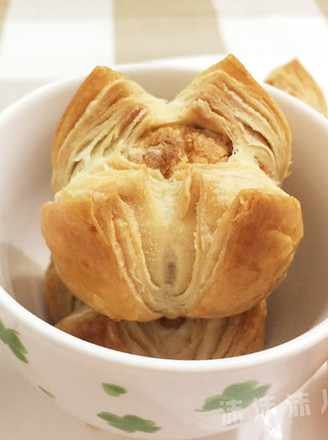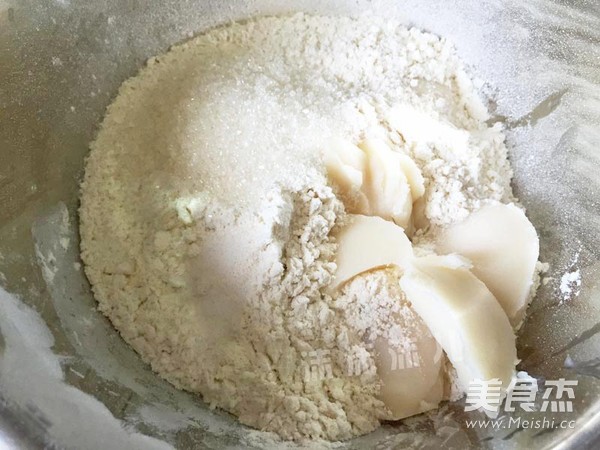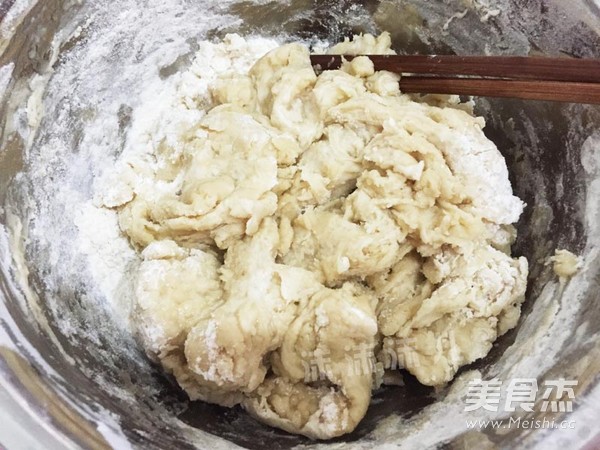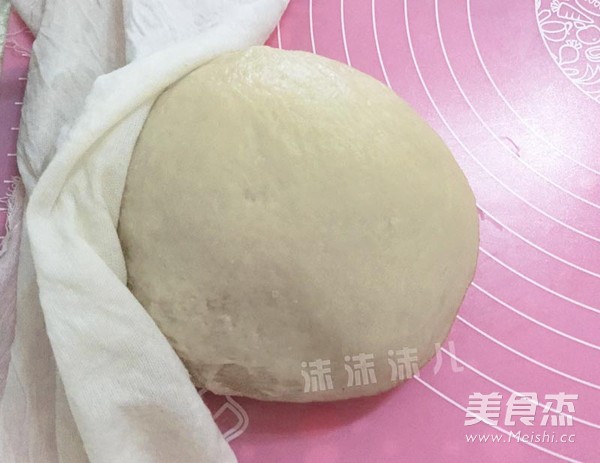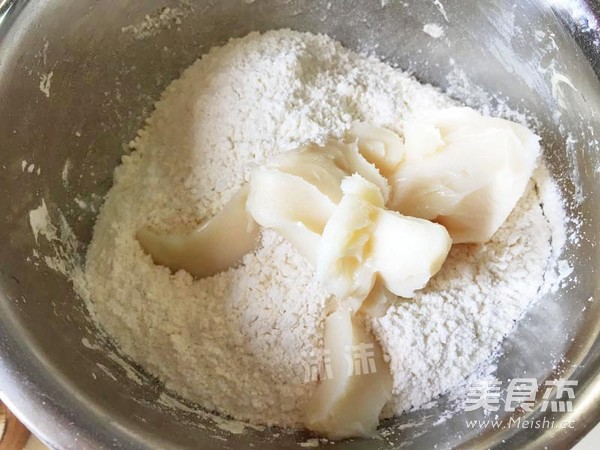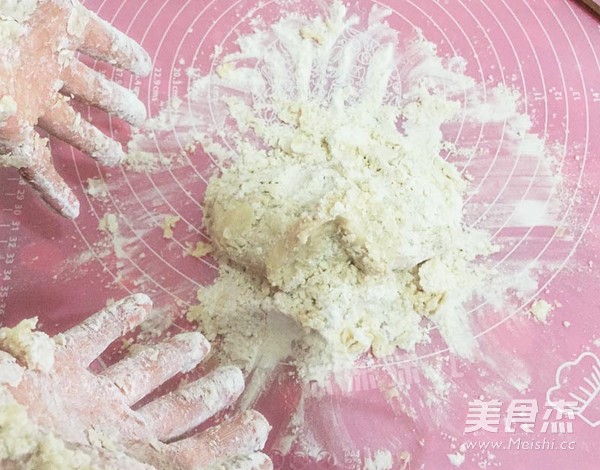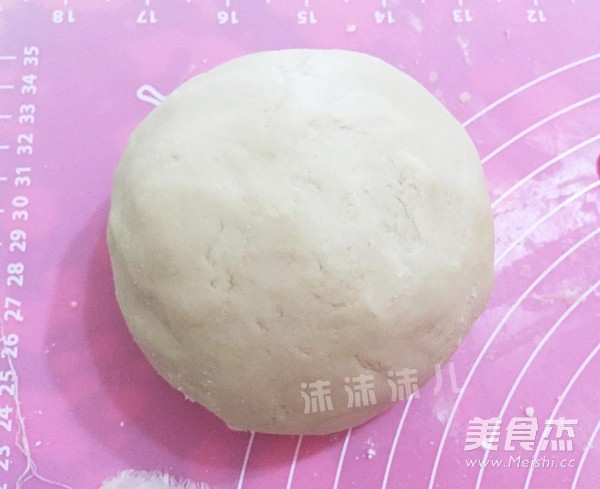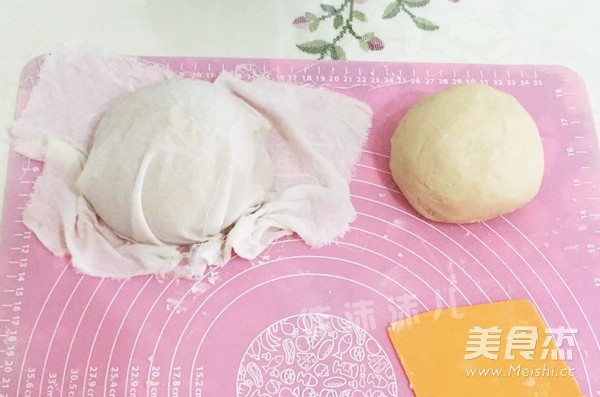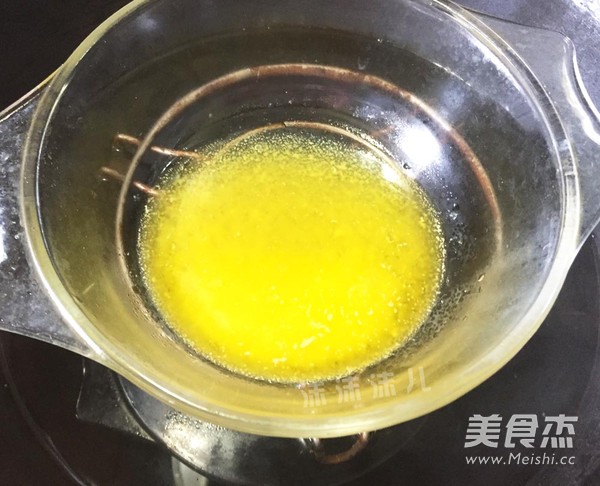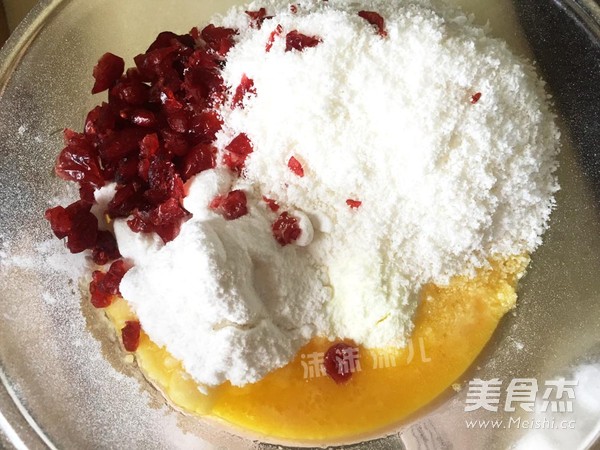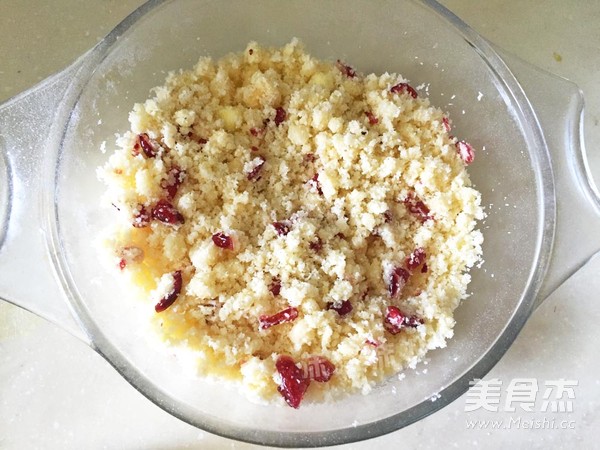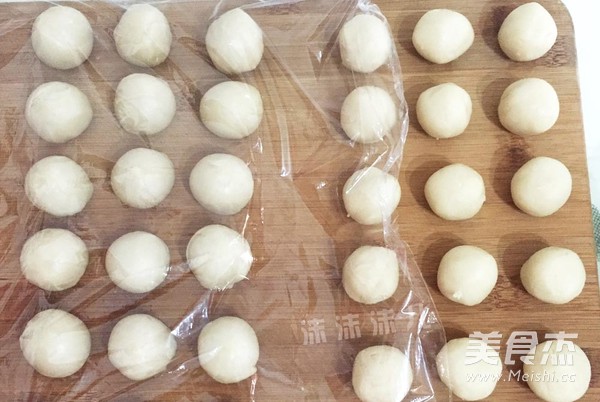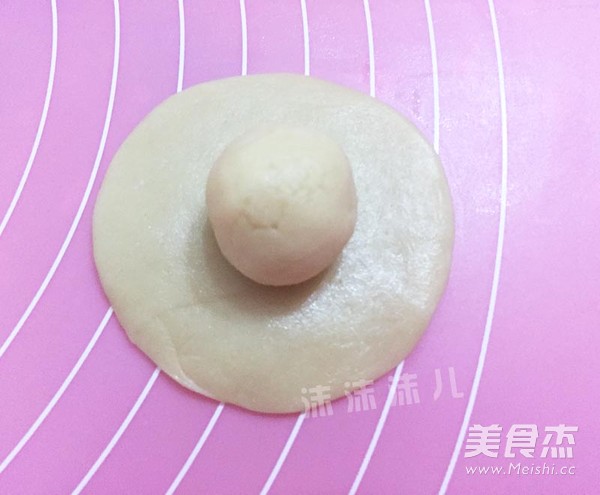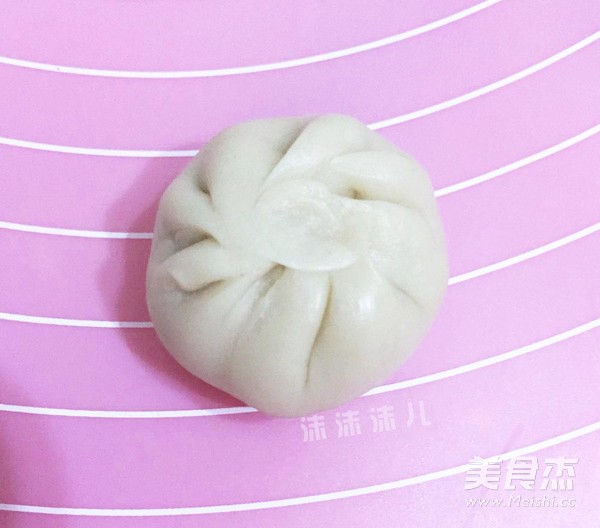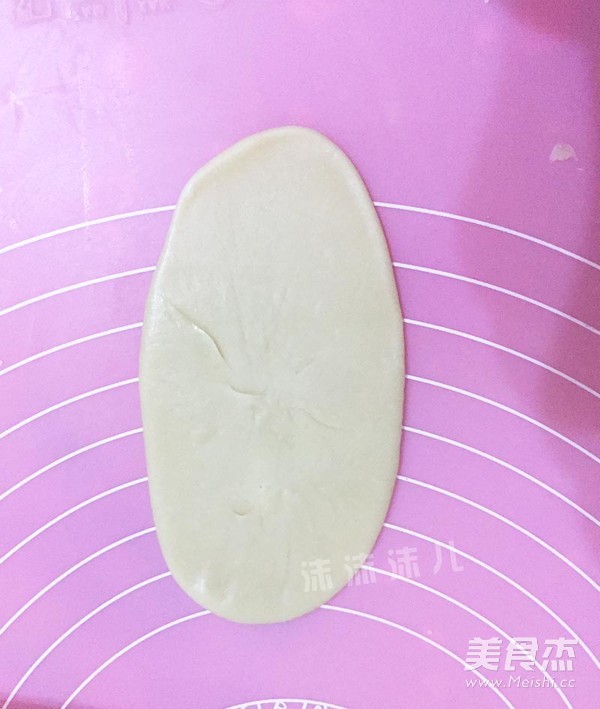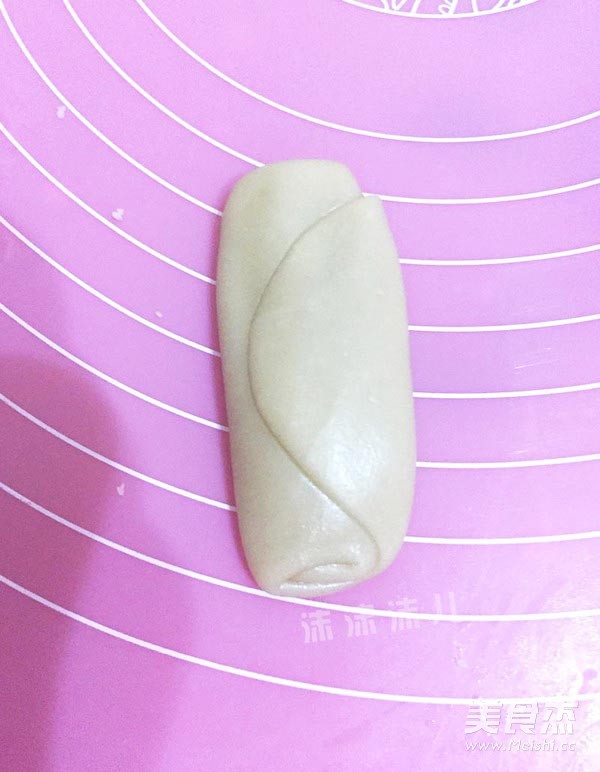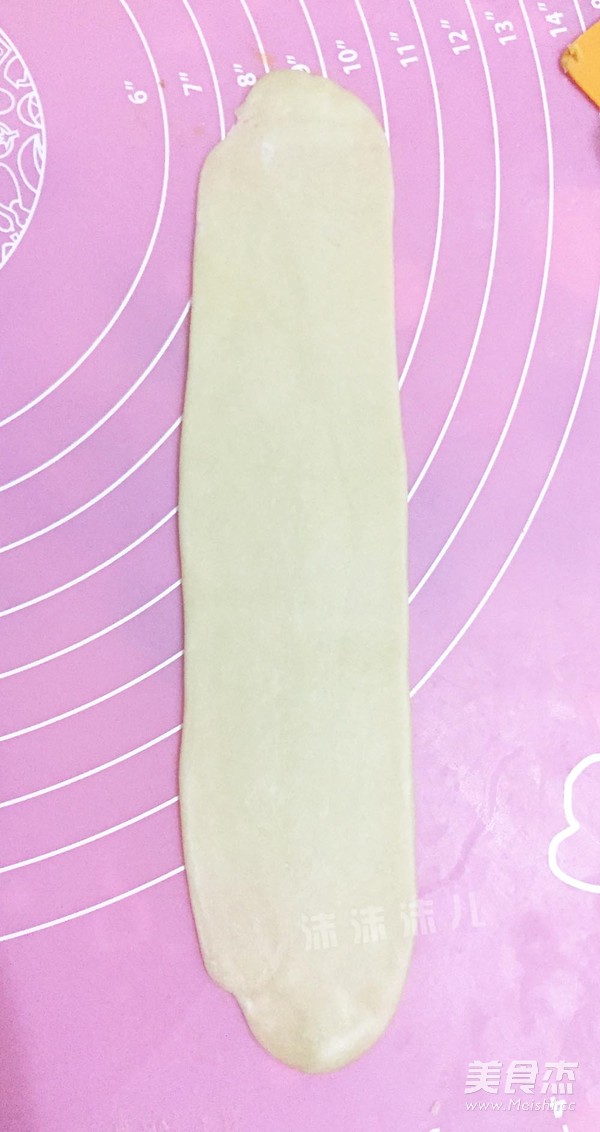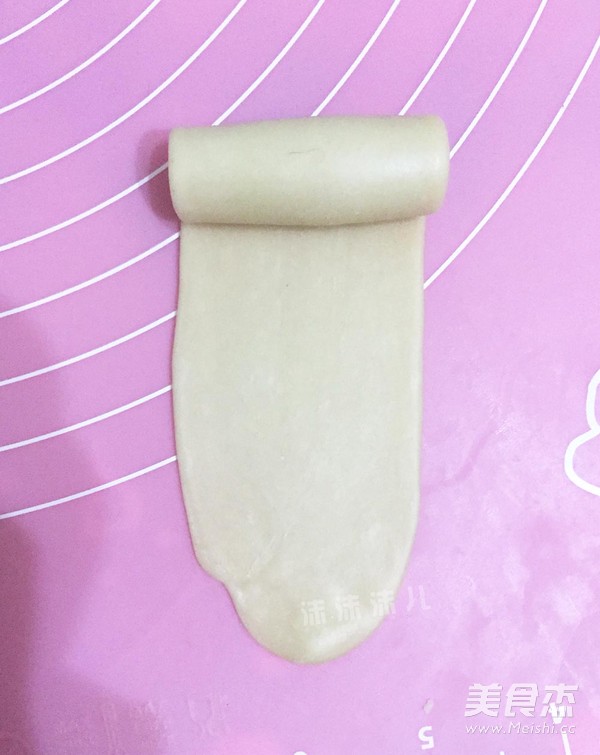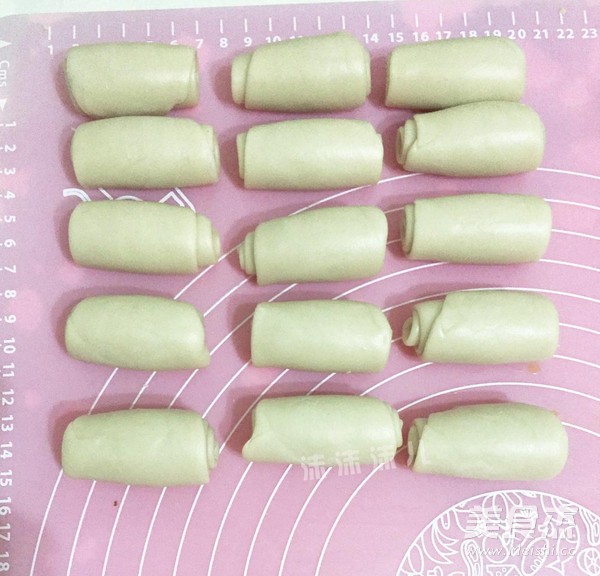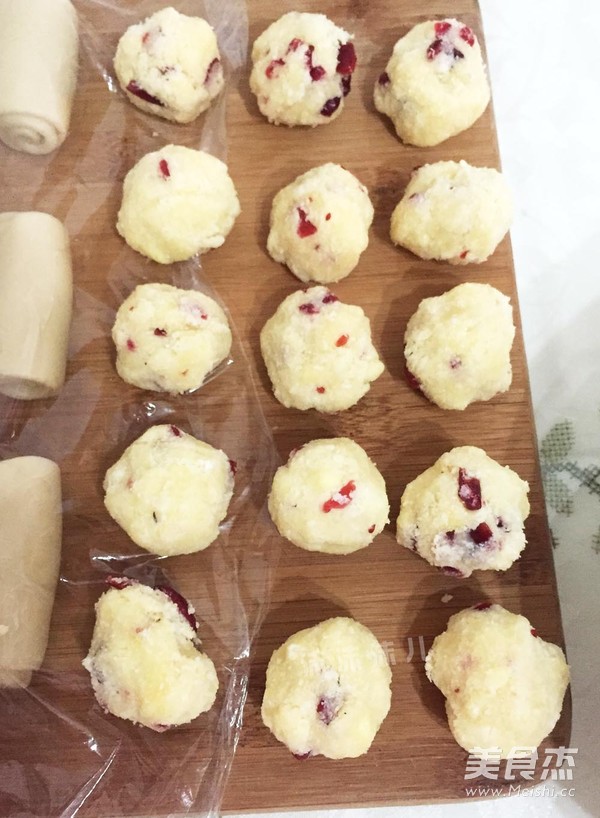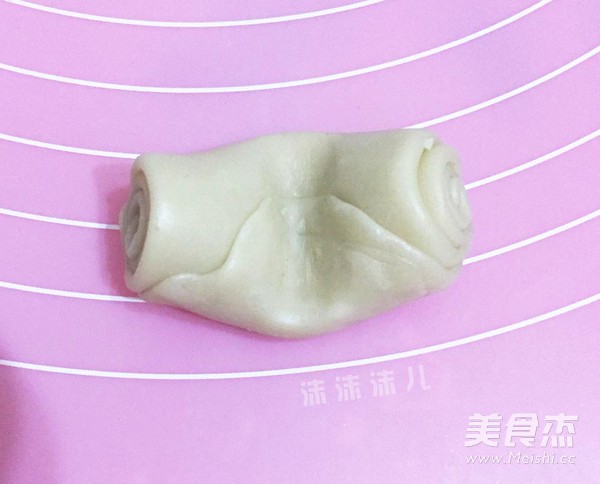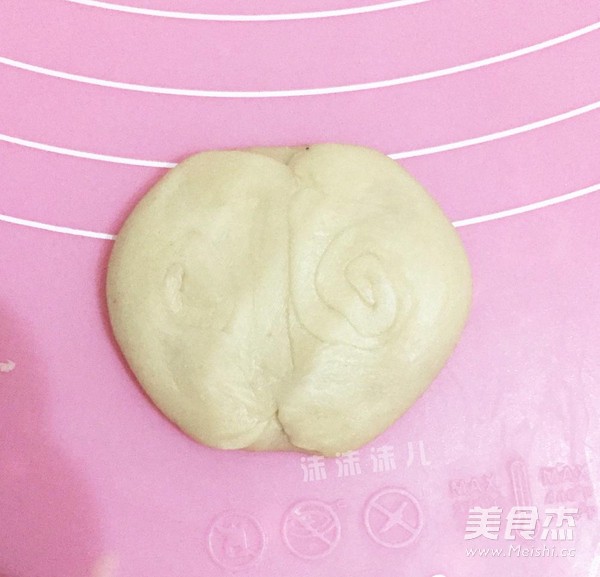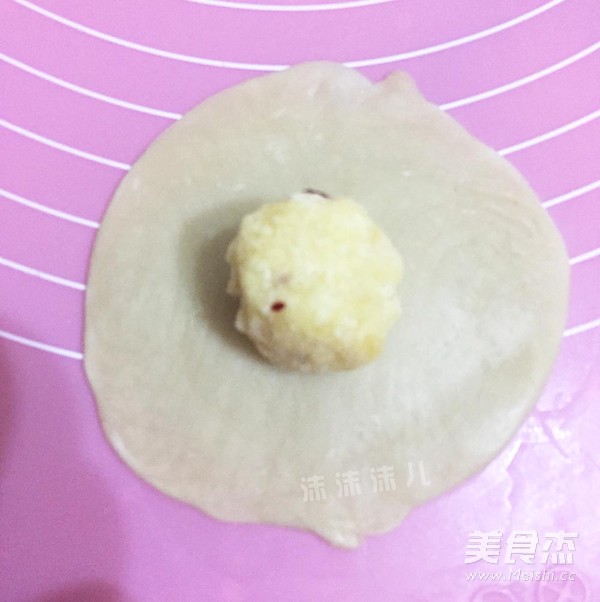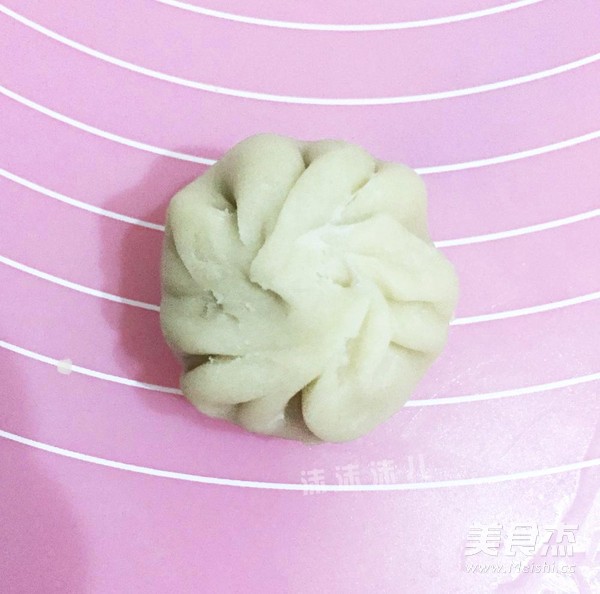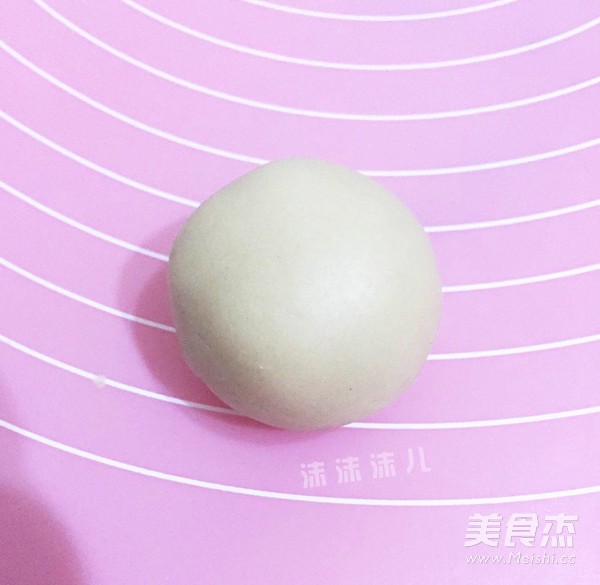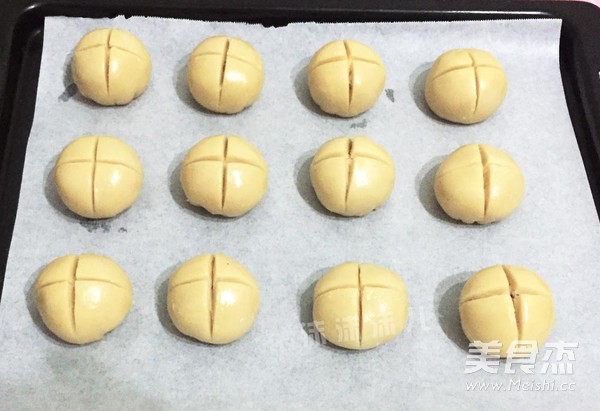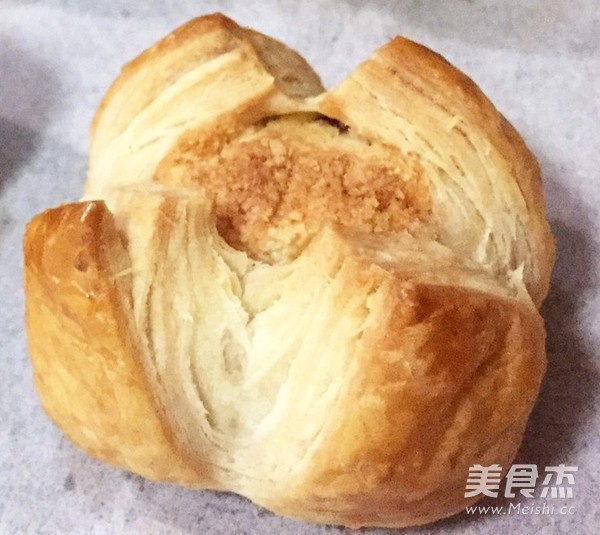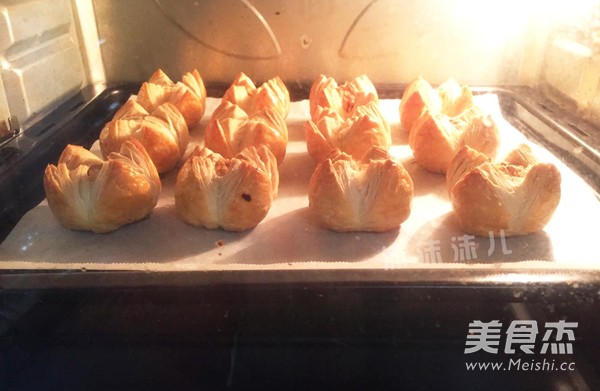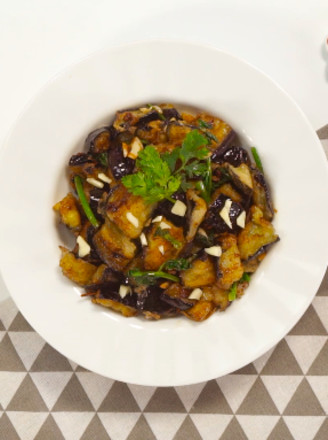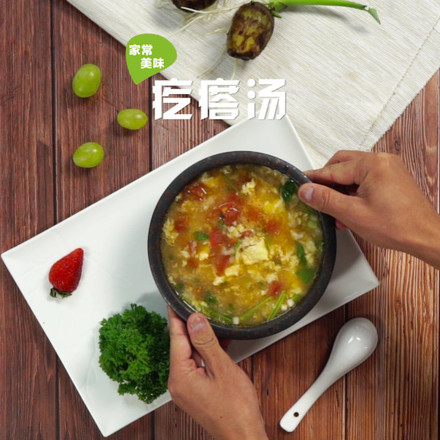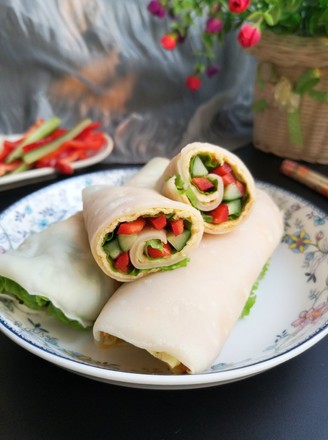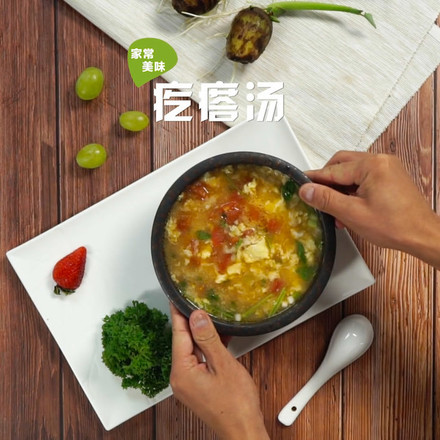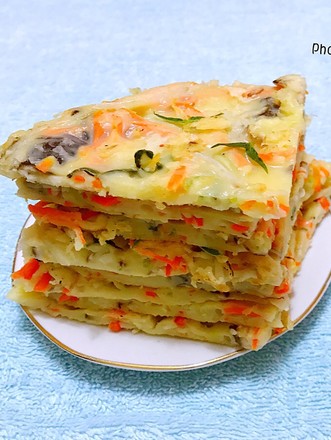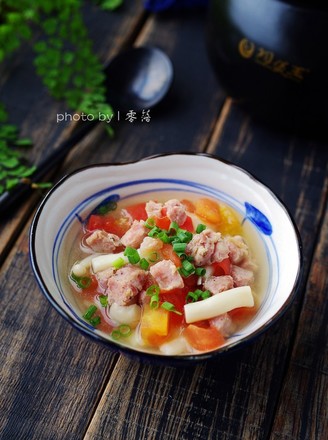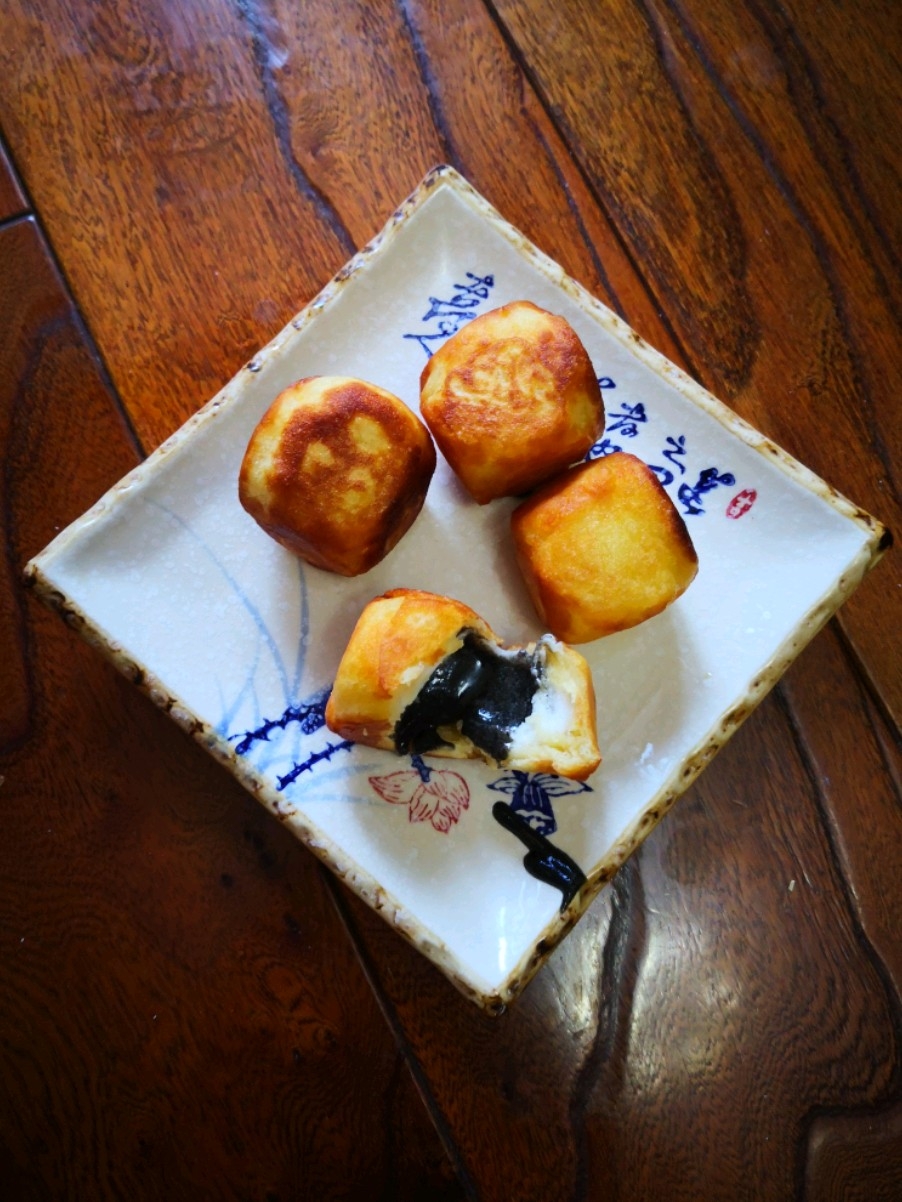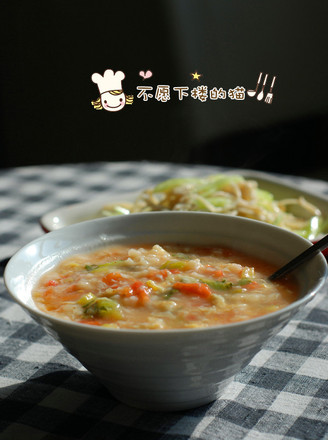Coconut Crisp
1.
First make water and oily skin dough. Pour 150g of all-purpose flour, 50g of lard, and 15g of sugar into a bowl.
2.
Pour 80-degree hot water into a bowl (about boiling water to shake it in the cup for a few times), and stir quickly to make the flour and water combine into a snowflake shape. Please add the amount of water according to the state of the dough. (The flour can be partially cooked with hot water, making the dough softer and easier to handle)
3.
Pour the flour lump on the chopping board and knead it vigorously to form a smooth dough. The oily skin needs to be rubbed more to withstand all kinds of toss in the later stage. Cover the kneaded dough with a damp cloth or plastic wrap and set aside for later use.
4.
Next, make shortbread. Mix 130 g of low-gluten flour and 65 g of lard.
5.
Pour on the chopping board and knead until the lard and flour are completely combined into a dough. At first, it will be dry and loose, and it won't form a dough. Just keep kneading and don't add water.
6.
Knead into a smooth pastry dough and set aside.
7.
Leave the water-oiled crust and shortcrust dough for 20 minutes to relax. Remember that the water and oily skin must be covered with a damp cloth or plastic wrap. The shortbread does not need to be covered and can be left open.
8.
Make coconut fillings when you relax the dough. Put 30g butter in a bowl and melt in water.
9.
Pour all other coconut filling ingredients (60g of coconut, 25g of egg liquid, 35g of powdered sugar, 20g of milk powder, 15g of dried cranberries) into the melted butter.
10.
Stir it into coarse sand particles and put it in the refrigerator to harden.
11.
Divide the loose water and oily skin and pastry into 15 portions, and knead them into balls for later use. In the process of dividing the water and oily skin, always remember to keep it covered with a damp cloth or plastic wrap.
12.
Take a water and oily skin dough, flatten it, and roll it into a round piece. Put a shortbread dough in the center.
13.
Wrap the shortbread with water and oily skin and pinch it tightly.
14.
Close up and press flat. Use a rolling pin to roll it into a beef tongue shape. Be gentle when rolling. (Apply some oil on the rolling pin to prevent the oily skin from being lifted)
15.
Roll up the beef tongue-like dough from top to bottom.
16.
The rolled dough turns 90 directions to become vertical and press flat.
17.
Roll it again with a rolling pin into a long strip, which is thinner and longer than the first time.
18.
Roll it up again from top to bottom.
19.
After all the rolls are done, cover the dough with a damp cloth or plastic wrap and let it rest for 15 minutes.
20.
When the dough is relaxed, divide the chilled coconut filling into 15 portions and knead them into balls.
21.
Take a loose dough and press a mark in the middle with your fingers.
22.
Push the two ends to the middle and press flat.
23.
Use a rolling pin to roll into a round piece with a thickness in the middle and a thin circle around it. Take a portion of coconut filling and put it in the middle.
24.
Wrap the stuffing with the dough and pinch it tightly.
25.
Close the mouth downwards and rub it into a circle with the palm of your hand. After everything is wrapped, preheat the oven at 185 degrees.
26.
Place the wrapped raw embryos on a baking tray, and brush the surface with egg wash. Allow the egg mixture to dry, and cut a cross on the surface with a sharp knife. (If you don’t want to wait for the egg liquid to dry, you can also cut it before brushing, but there will be egg liquid dripping onto the surface of the filling)
27.
Specifically, let's talk about the small details of cutting the cross. There are two ways to cut open puff pastry, and the blooming effect after baking is also different. Which cutting method to choose according to personal preference. The first cutting method is deep cutting, as shown in the figure. Straight knife down, cut deeper, and cut the belt stuffing together. Each layer of puff pastry is cut open, the blossoms will be larger, and the stuffing will all bloom. I call it the bloom cut method.

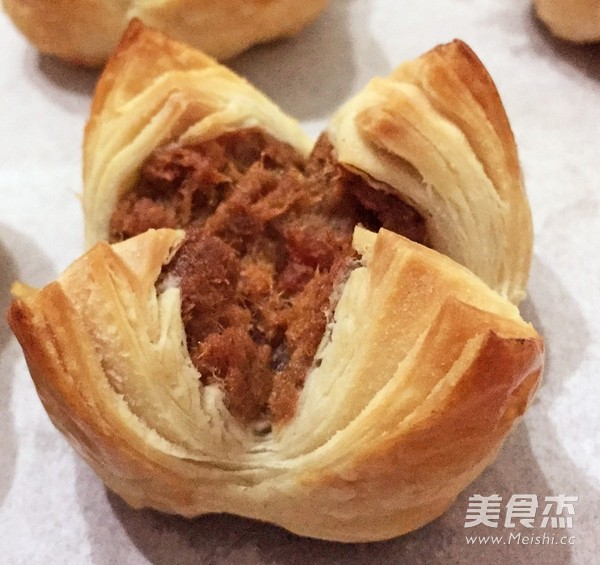
28.
The second cutting method is to cut shallowly without cutting the filling, as shown in the figure. Use the tip of a knife to draw a cross on the surface, only the top is made a little deeper, to the filling, the other places are not completely cut. Each layer of meringue has a different degree of scoring, only the outermost layer is very spaced, and the more you go in, the less you get. After this kind of baking, only the filling leaks from the top, and the puff pastry opens from the inside to the outer layer. I call it the bud-cut method. But no matter what kind of cutting method, the outermost skin must be cut relatively low, otherwise it looks like the neck is pinched and only the mouth is open, which is very unsightly.
29.
After all is cut, put in the middle of the oven and bake at 185 degrees for 30 minutes. Bake until it blooms, the petals are in full bloom, and the skin is golden in color. Serve.
30.
It's done. The fragrance is tangy, and it is drooling when I look at it.


Tips:
1. Shortening effect: lard>butter>vegetable oil. Traditional Chinese shortbread is made with lard. If you don't have or don't want to use lard, you can also use butter or vegetable oil instead, but the flavor and crisping effect will be greatly reduced.
2. When kneading any flour into a dough, the amount of water that needs to be added depends on the condition of the dough, which is related to the region, humidity, and water absorption of the flour. If there is less, you can make up water, if there is more, it is not suitable for making up noodles. So the amount of water is only a reference, not a fixed one. It is recommended to reserve 20% of the amount when adding water. But don't just be afraid of adding water. If the amount of water in the water and oily dough is too small, the dough will not be soft enough, and the shortbread will easily leak out during the later operation.
3. Scalding the flour with hot water can partially mature the flour, making the dough softer and easier to handle. The slack requirements for the latter are not so high, but in order to avoid the leakage of the cracked puff pastry, it is still recommended to slack. Double insurance. If you directly use cold water to make the noodles, then relaxation is necessary and indispensable, but haste is not enough.
4. Water-oil-skin dough should be covered with a damp cloth or plastic wrap throughout the entire process, otherwise it will dry and crack and cannot be operated.
5. When rolling the puff pastry, apply some oil on the rolling pin, otherwise the oily skin will be lifted, and there will be no more oil. When rolling, the movements must be gentle and gentle.
6. The dried cranberries in the coconut filling can also be replaced with other dried fruits such as raisins.
7. The coconut paste filling is not soggy and soft, it is relatively hard, and it is very convenient to wrap. You can use the pleating method to close the mouth, or you can directly use the tiger's mouth to push the dough up and wrap it up.
8. The open puff pastry is usually brushed with egg wash first, and then crossed after it dries, but it does take a long time and it takes a long time to wait. If you don't want to wait for the egg liquid to dry, you can cut it first and then brush it, but the egg liquid will drip into the surface of the filling, which I personally think is not a big problem.
9. The specific two cutting methods of cross cutting are directly written in steps 29 and 30 in order to match the picture. Please choose according to your personal preference.
10. Any baking temperature and time are closely related to the temperament of your own oven. The temperature and time are not fixed, please depend on the specific situation of your own oven. But it is recommended that if the color is darker and the time is not enough, please cover with tin foil and continue baking, otherwise the filling won't dry out and won't taste good.

